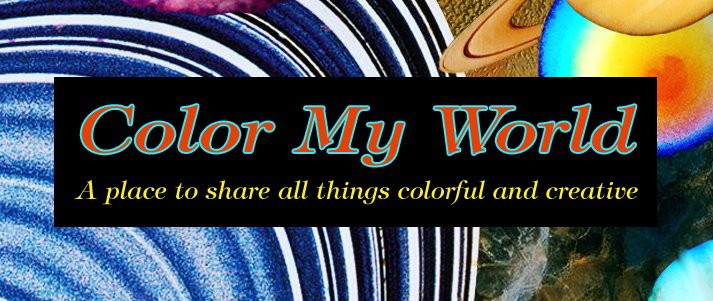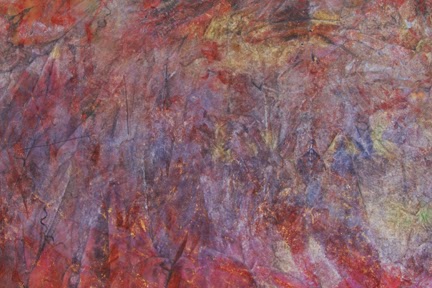I've used gelatin plates for printing in the past but I haven't had a lot of luck with them. It seems like they get warm really fast and needed to be refrigerated often. I didn't even get the process fully figured out before the plate fell apart. I read about somebody (sorry, can't remember who) that used glycerin as a preservative in a gelatin plate and it worked well. The printing plate did not need refrigeration and it did not mold. I saved the information - just in case.
Fast forward . . . Gelli Plates became popular and I became tempted to buy a large one, but then I remembered that I had a recipe for a permanent gelatin plate and I decide to give it a try. I ordered the glycerin from Amazon and searched for the perfect cookie pan. Once the glycerin arrived, it was really fast and easy to make.
Small Gelatin Plate Recipe:
2 TBS Gelatin
1/2 cup Glycerin
1/2 cup Boiling Water
Large Gelatin Plate Recipe:
12 TBS Gelatin
3 cups Glycerin
3 cups Boiling water
1) Mix the gelatin into the glycerin
2) Add the boiling water. Stir until dissolved
3) Pour into the pan and level
4) Let harden at room temperature
Gelatin from grocery store and vegetable glycerin from Amazon
Small Plate: Use a shallow container. Once gelatin is set, flip it over and remove the gelatin. Keep it stored, upside down on the lid so it can be used easily.
Large Plate: Use the Large Recipe or calculate how much gelatin your container needs to fill to the brim. I leave the gelatin in the pan even while printing. Make a cover for the pan to protect the gelatin. If the plate gets damaged, cut it up and put it in a microwavable container, melt it, then pour it back into the pan.
10" x 15" shallow cookie pan, filled to brim with gelatin
DO NOT clean up in your sink or you will clog your pipes. Wipe up the gelatin with paper towels and throw away. Rinse with hot water outside.
I've tested my plate already and it works great. I'll post photos in a couple of days.





























































